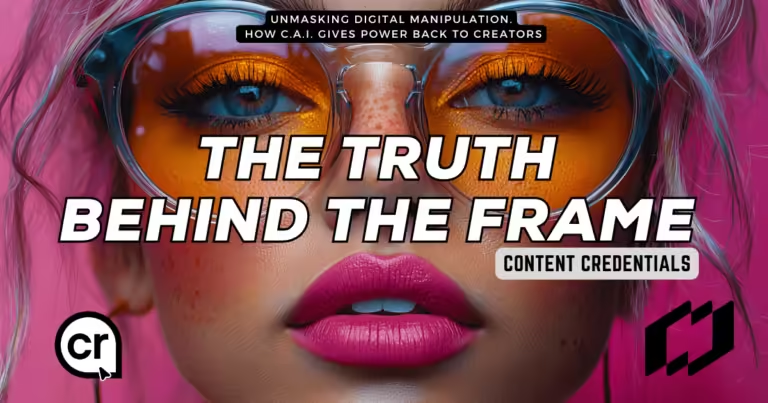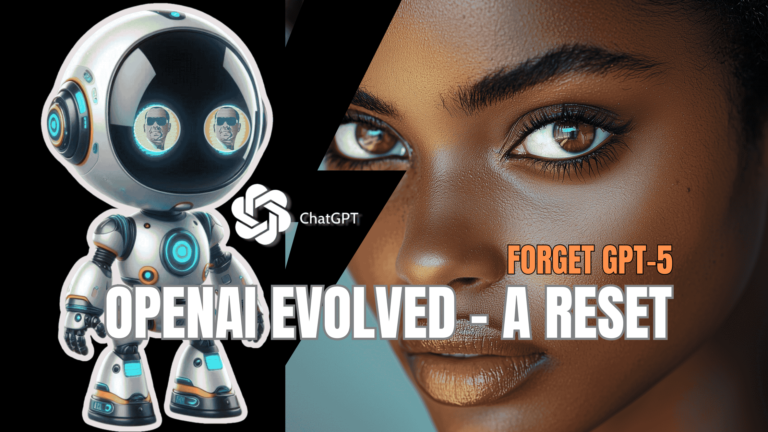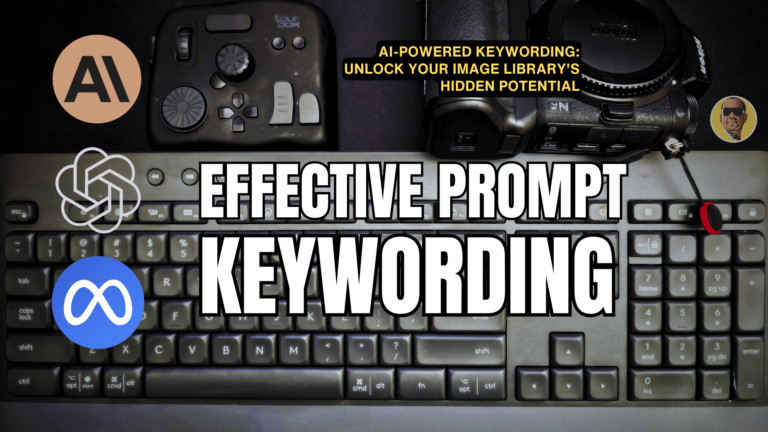The world of AI-powered image creation is witnessing a revolution with the arrival of a groundbreaking generative model from Black Forest Labs. This innovative tool is quickly gaining recognition for its high-quality outputs and open-source nature. As we explore its capabilities and potential, we’ll see how this AI system stands up against industry giants and what its emergence means for the future of AI-powered solutions.
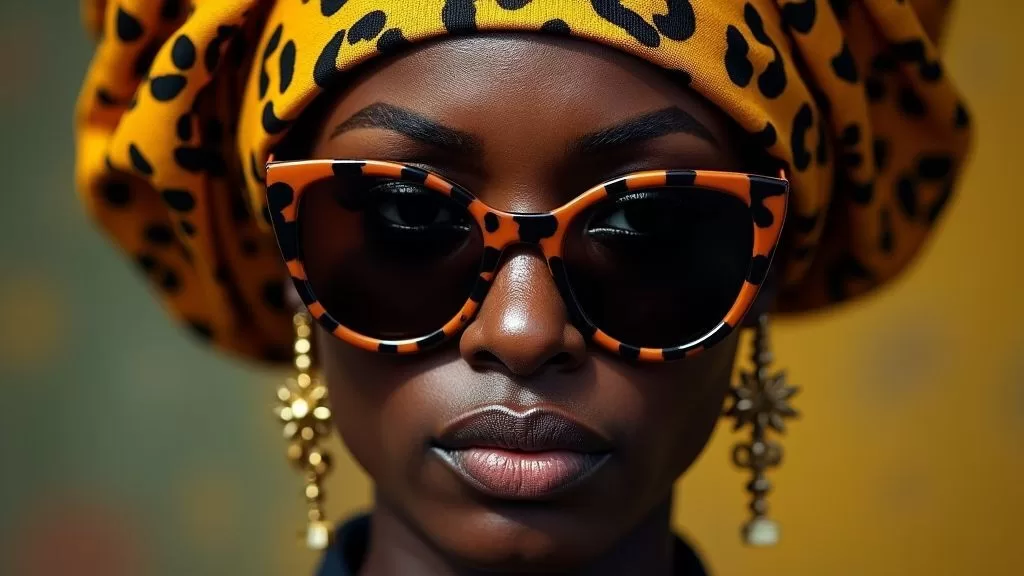

The Birth of Flux AI: A New Era in Generative Model Training
Black Forest Labs burst onto the scene with little warning, introducing Flux AI as a powerful new tool in the AI artist’s arsenal. Founded by Robin Rombach, Andreas Blattmann, and Dominik Lorenz, along with other key figures in AI algorithms and deep learning, the company brings a wealth of experience from their time at Stability AI, the creators of the popular Stable Diffusion models.
The company’s mission is clear and ambitious: to develop and advance state-of-the-art generative AI models for media such as images and videos, pushing the boundaries of creativity, efficiency, and diversity. This commitment to innovation and accessibility is evident in the Flux AI architecture and capabilities.
Backing from Tech Giants: Flux AI’s Impressive Funding Round
Black Forest Labs’ potential hasn’t gone unnoticed by tech industry leaders. The company recently announced the successful closing of their Series Seed funding round, raising an impressive $31 million. This round was led by Andreessen Horowitz, a venture capital firm co-founded by Marc Andreessen, who is notably known for creating Netscape and the Mosaic web browser – pivotal innovations in the early days of the internet.
The funding round also saw participation from angel investors including Brendan Iribe, Michael Ovitz, Garry Tan, Timo Aila, and Vladlen Koltun, along with follow-up investments from General Catalyst and MätchVC. This strong financial backing from renowned experts in AI research and company building underscores the potential that investors see in Flux AI and its applications.
Moreover, Black Forest Labs has assembled an advisory board that includes Michael Ovitz, bringing extensive experience from the content creation industry, and Professor Matthias Bethge, a pioneer of neural style transfer and a leading expert in open European AI research. This combination of financial support and expert guidance positions Flux AI for significant growth and innovation in the generative AI space.
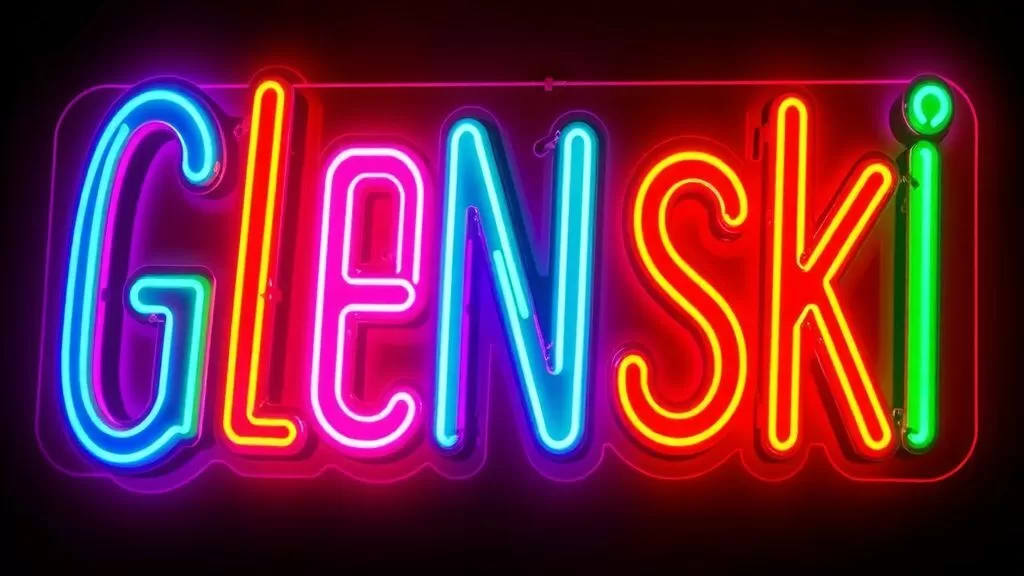
Flux AI: A Closer Look at the AI Model
This AI comes in three distinct versions, each tailored to different use cases and hardware capabilities:
- Pro Version: Designed for business intelligence and commercial applications, this variant is already being incorporated by companies to offer AI-powered solutions to their subscribers.
- Dev Version: A mid-weight model optimized for performance and quality, ideal for AI applications in marketing and customer service.
- Schnell Version: A faster, more lightweight option suitable for users with less powerful hardware, making generative AI accessible to a broader audience.
What sets this system apart from its competitors is its ability to run on reasonably good hardware, including high-performance laptops. This accessibility opens up new possibilities for localized AI-powered solutions in various industries.
Comparative Analysis: Flux AI vs. The Competition
When pitted against industry leaders, Flux AI holds its own and even excels in several areas:
- Accessibility: Unlike some competitors, Flux AI can run locally on a good laptop, offering greater privacy and flexibility for AI-powered solutions.
- Open-source nature: Following in the footsteps of other open AI models, Flux AI’s approach allows for greater customization and integration into various platforms.
- Human figure rendering: Early user reports suggest that Flux AI may outperform others in creating realistic human figures, a crucial feature for many AI applications.
- Prompt adherence: Users have noted that Flux AI often produces images that more closely match the given prompts, showcasing advanced natural language processing (NLP) capabilities.
- Text rendering: Flux AI appears to handle text within images more accurately than some of its rivals, a valuable trait for business intelligence and marketing applications.
Visual Comparison: Flux AI vs. Other Leading Models
To truly appreciate the capabilities of our focus model, we’ve conducted a series of tests using diverse prompts across four different AI systems: our subject model, Meta AI, Midjourney V6.1, and DALL-E. This comparison allows us to visually assess how it stands up against its competitors in terms of image quality, prompt adherence, and overall aesthetic appeal.
Analysis done by Claude 3.5, the images are fed to the LLM along with each of the prompts and then asked to analyze each for adherence and quality of output.
Comparison 1:
‘rap cover, street style, tattoo hand of a boy is lacing up his shoes, ultra details, 1990 Chevrolet car in background, abstract‘




Flux: (Image 1)
Prompt adaptation: Good
- Captures the street style and tattoo elements well
- Shows a partial Chevy car in the background
- Depicts hands tying sneakers, which fits the rap cover aesthetic
Quality: High - Realistic rendering with vibrant colors
- Detailed tattoo designs
- Good composition balancing foreground and background elements
Meta AI (Image 2):
Prompt adaptation: Fair
- Strong emphasis on street style and tattoos
- Misses the specific 1999 Chevy element
- Captures the gritty, urban rap cover feel
Quality: Medium-High - Stylized, grungy look fitting the prompt
- Detailed tattoos, but less refined than other versions
- Colorful, chaotic background adds to the street vibe
Midjourney V6.1 (Image 3):
Prompt adaptation: Very Good
- Excellent representation of tattoo hand element
- Includes vintage car, possibly representing the 1999 Chevy
- Strong street style aesthetic
Quality: Very High - Highly detailed, almost hyper-realistic rendering
- Excellent texture and lighting
- Balanced composition with strong focal point
DALL-E (Image 4):
Prompt adaptation: Excellent
- Clearly shows tattooed hands
- Includes a Chevy grill in the background
- Captures street style and rap cover aesthetics
Quality: Excellent - Hyper-realistic rendering
- Intricate, well-designed tattoos
- Sharp details throughout, from shoelaces to car grill
Overall, DALL-E seems to have interpreted the prompt most accurately, with MJ following closely. Flux produced a high-quality image but missed some specific elements, while Meta AI’s interpretation was the least aligned with the exact prompt but still captured the overall aesthetic well.
Comparison 2:
“woman wearing glow in the dark pink lip-gloss , side view, neon and black studio background“
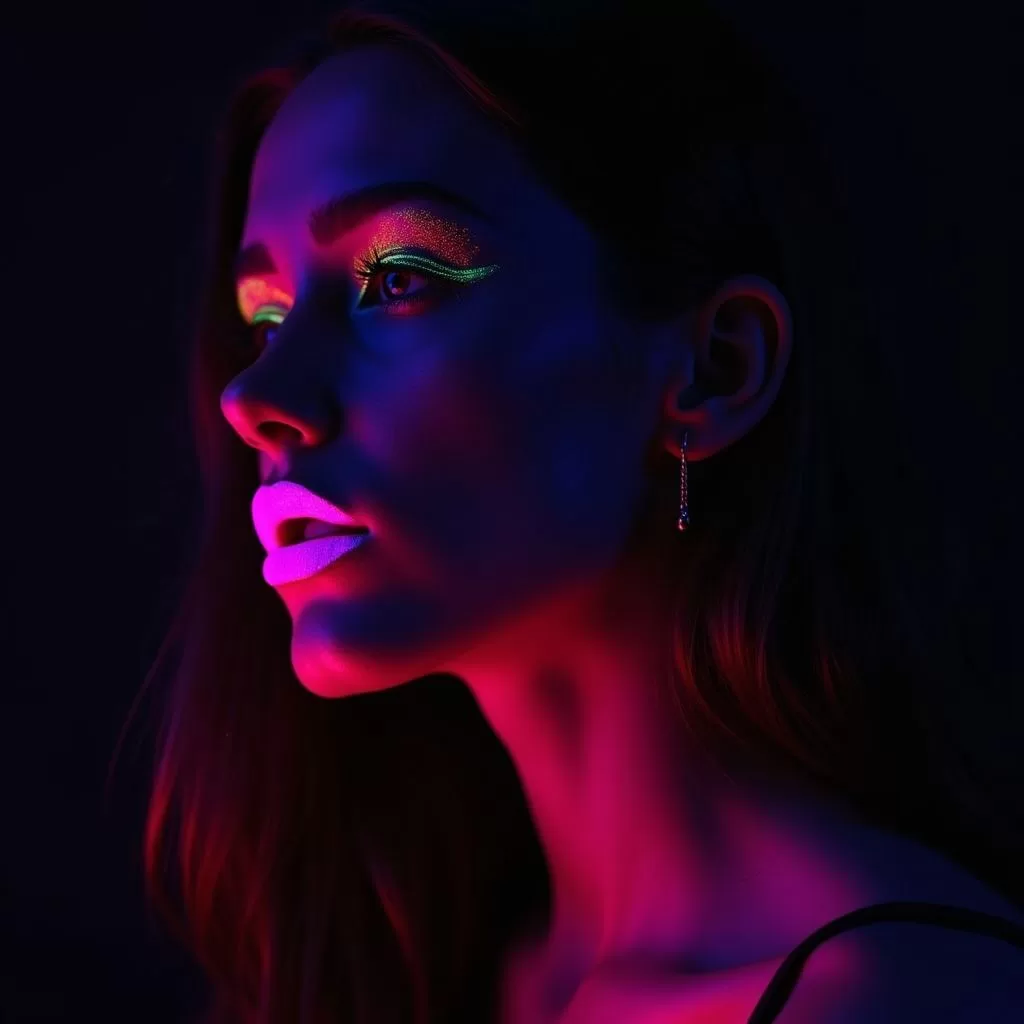


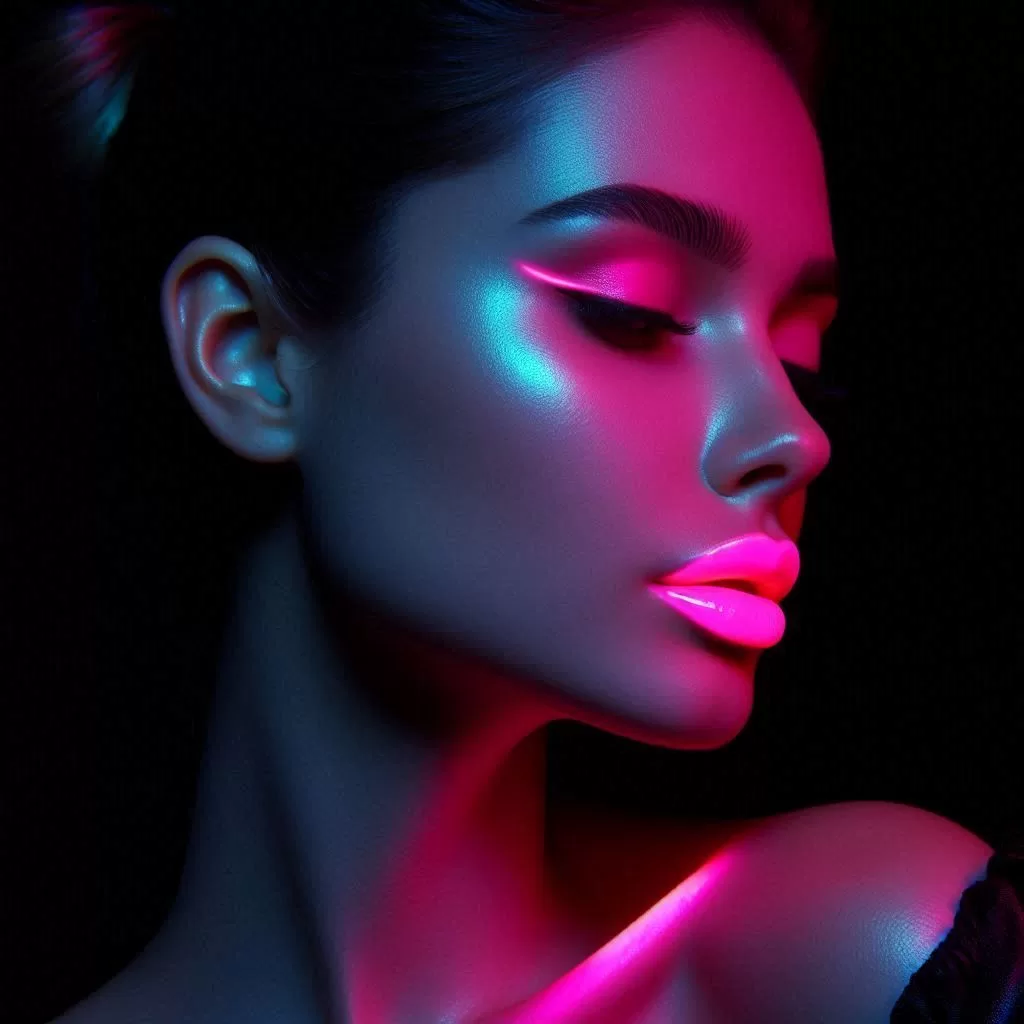
Flux (Image 1):
Prompt adherence: Good
- Neon colors and black background
- Glowing pink lips Quality: Excellent
- Striking contrast between neon colors and dark background
- Detailed facial features and makeup
- Smooth gradient of colors
Meta AI (Image 2):
Prompt adherence: Fair
- Neon colors and black background
- Pink lips, but not clearly “glow in the dark”
- Added neon pink face paint, not in the original prompt Quality: Very Good
- Unique interpretation with the face paint
- Detailed hair texture
- Good contrast and lighting effects
Midjourney V6.1 (Image 3):
Prompt adherence: Very Good
- Neon colors and black background
- Glowing pink lips and eyeliner Quality: Excellent
- Sharp contrast between neon pink and blue tones
- Detailed skin texture
- Creative interpretation with glowing eyeliner
DALL-E (Image 4):
Prompt adaptation: Excellent
- Clearly glowing pink lips Quality: Outstanding
- Hyper-realistic skin texture
- Perfect balance of neon blue and pink
- Creative addition of glowing eyeliner while maintaining focus on lips
These visual comparisons showcase LUX’s impressive performance across diverse scenarios, especially noteworthy given its recent release August 1st. In both the portrait and street-style tests, LUX demonstrates a remarkable ability to generate high-quality, detailed images that compete well with more established AI models.
In the facial portrait test, LUX excelled in rendering realistic lighting effects and subtle facial details, creating an atmospheric, cinematic-quality image. The model showed particular strength in capturing the interplay of neon lights and shadows on the subject’s face.
For the street-style test involving tattooed hands and sneakers, LUX again proved competitive. It captured the gritty, urban aesthetic well, rendering detailed tattoos and maintaining good color balance and composition. The inclusion of a partial Chevy car in the background showed LUX’s ability to incorporate multiple elements from the prompt effectively.
Across both tests, LUX’s output strikes a balance between artistic interpretation and photorealism. This versatility – performing well in both studio portrait and urban street style scenarios – is particularly impressive for a newly released model.
While each AI model has its strengths and interpreted the prompts slightly differently, LUX consistently produced high-quality results comparable to those of well-established models like Meta AI, Midjourney, and DALL-E. This level of performance, achieved so soon after launch, suggests significant potential for LUX’s growth and refinement.
LUX’s strong showing in these diverse tests positions it as a promising tool for creative professionals across various fields, from portrait photography to urban and street art. Its ability to generate highly realistic, contextually appropriate images in different styles demonstrates versatility and robust foundational capabilities.
This early comparison highlights LUX as an exciting new entrant in the AI image generation field. Its ability to produce results comparable to more established models across different scenarios, so quickly after launch, indicates a strong start and suggests the potential for further improvements and innovations in the near future.
The Impact of Flux AI on Business and Technology
The introduction of Flux AI has sent ripples through both the AI art community and the business world. Its open-source nature and ability to run on consumer-grade hardware democratize access to high-quality AI image generation. This could lead to:
- Increased innovation as more developers can experiment with and build upon the model.
- Greater diversity in AI-generated content as a wider range of artists and businesses gain access to powerful tools.
- Potential disruption of the current market leaders’ business models.

Looking to the Future: Applications and Beyond
Black Forest Labs isn’t content with just image generation. They’ve announced plans to develop additional AI-powered solutions, including a text-to-video model. This ambitious goal could further revolutionize the field of AI-generated media and open up new Flux AI applications in industries such as marketing, entertainment, and education.
As AI continues to evolve, tools like Flux AI play a crucial role in pushing the boundaries of what’s possible. The accessibility and power of these models raise important questions about the future of creativity, business intelligence, and the role of AI in content creation.
Flux AI: Hands-On Playgrounds
After exploring the capabilities of this innovative AI, you might be eager to try it out for yourself. Fortunately, several platforms offer access to the model, allowing you to experiment with this cutting-edge generative tool. Here’s a list of resources where you can experience it firsthand:
1. Replicate – Offers a platform to run Flux AI models in the cloud.
2. Mage Space – Provides a user-friendly interface for creating AI-generated images.
3. Fal.ai – Hosts a variety of AI models, including Flux AI, for easy experimentation.
4. Civitai – A community platform where you can explore various AI models and their outputs.
5. Hugging Face – Offers access to Flux AI models and other resources from Black Forest Labs.
**Disclaimer:** This blog and its author are not affiliated with or representing any of the platforms or companies mentioned above. These links are provided for informational purposes only.
Conclusion: Flux AI – A New Frontier in Generative AI
This groundbreaking AI represents more than just another generative model; it’s a symbol of the rapid democratization of AI technology. As these tools become more accessible and powerful, we’re likely to see an explosion of creativity and innovation across various fields.
While it’s too early to declare this system the definitive successor to other generative models, its impressive debut and the pedigree of its creators suggest that it will be a significant player in the AI-powered solutions space for years to come.
As we move forward, it will be fascinating to watch how Black Forest Labs’ creation evolves, how the competition responds, and how businesses and creators harness these new AI-powered solutions to push the boundaries of digital content creation and business intelligence.





